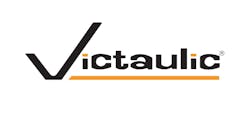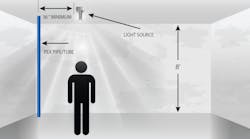Latest from Piping
Sponsored
IRVING, TX — The Plastics Pipe Institute (PPI) has published a new technical document that provides recommended installation practices for PEX piping exposed to indoor artificial lighting. PPI TN-72 Potential Effects of Artificial Lighting on Crosslinked Polyethylene (PEX) Pipe and Tubing and Recommended Installation Practices is available on the association’s website.
According to PPI, many types of materials can be affected by exposure to certain types of natural and artificial lighting. The effects can manifest themselves as simple color changes such as fading, or as more significant degradation via oxidation or other mechanisms. Research indicates that UV must be considered where PEX is installed near all artificial light sources, because after decades of exposure, PEX piping may be adversely affected by ultraviolet (UV) emissions from certain artificial light sources.
Difficult Problem
“There have been questions about the potential effects of indoor lighting,” stated Lance MacNevin, P. Eng., Director of Engineering for PPI's Building & Construction Division. “These questions can be difficult to answer because each type and even each brand of artificial light has unique UV emittance, and therefore, unique effects. It is difficult to address all types of artificial light in a universal recommendation, but we have learned that fluorescent lights, either tubular versions or single-envelope CFLs, are of most concern in residential and commercial applications, as these lights have the highest component of UV emissions.
“Fortunately, UV irradiance and its harmful effects dimmish the further away the pipe or tubing is installed from the artificial light source, so setback distance is a critical consideration,” MacNevin continued. “Therefore, PPI TN-72 provides recommended minimum distances to artificial lighting that are based on the use of fluorescent lights. Other types of lights, such as incandescent or LED lights, are of less concern and closer distances may be used.”
According to PPI, minimum setback distances of 36 inches for residential and light commercial applications and 30 feet for industrial, manufacturing, warehousing, and large commercial applications are considered reasonable for all types of artificial light sources.
Plastics Pipe Institute
Founded in 1950, PPI is the non-profit North American trade association representing the plastic pipe industry, including pressure pipe materials CPVC, HDPE, PEX, PE-RT, and PP. PPI members work together to develop industry publications, collaborate on standards, and create educational information about these systems.
The new PPI TN-72 is available directly from PPI at: https://plasticpipe.org/common/Uploaded files/Technical/PPI TN-72.pdf.
Additional information about multiple types of plastic pressure piping systems is available from the PPI Building & Construction Division at www.plasticpipe.org/buildingconstruction.



